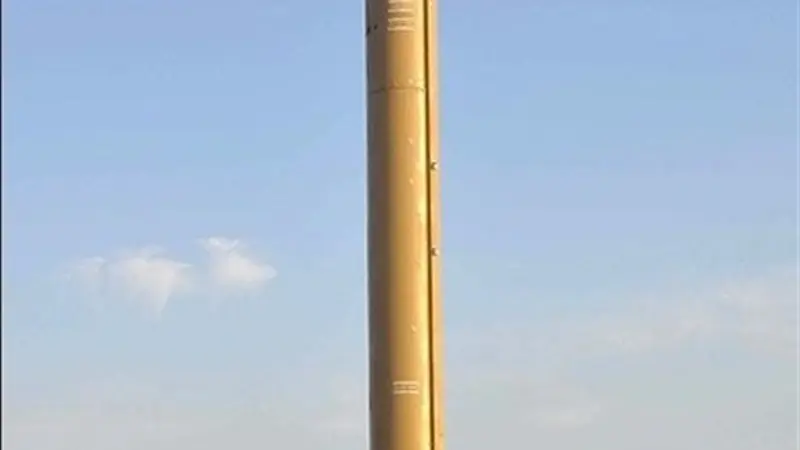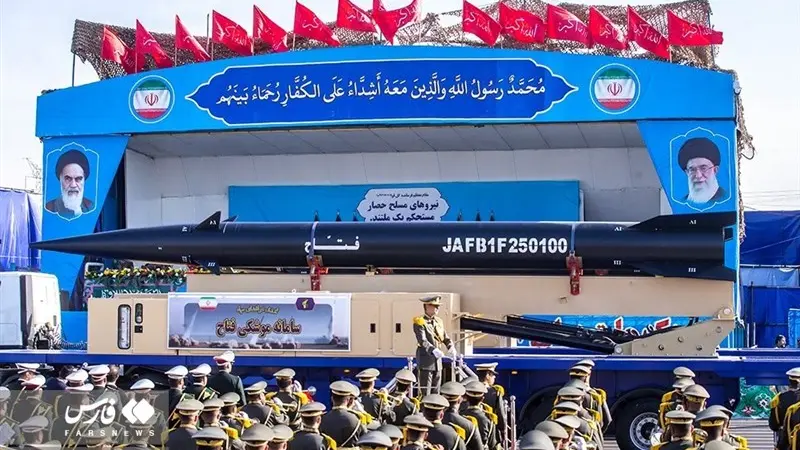Iran showcased a new ballistic missile named Jihad, developed by the Islamic Revolutionary Guard Corps (IRGC) Aerospace Force, during a military parade in Tehran on Saturday.
The Jihad missile system was officially unveiled for the first time on Saturday, introducing a new launch platform for liquid-fueled missiles, according to Iranian government media and IRGC sources.
According to the IRGC-affiliated Tasnim website, it is a ballistic missile with a range of 1,000 kilometers, featuring a dual-missile launcher that distinguishes it from other Iranian liquid-fueled missiles.
Tasnim stated, “A glance at the Jihad missile reveals that it is an optimized version of the Qiam missile, whose range was previously increased from 800 kilometers to 1,000 kilometers, and its warhead became guided.”

The Qiam missile, Iran’s first liquid-fueled missile without fins, was introduced in 2010 with an initial range of 800 kilometers. Its design modification for fin removal allowed for launch from various missile silos. Subsequent enhancements included the replacement of the standard triple-cone warhead with a detachable, guided variant, improving accuracy to within 50 meters, according to Tasnim.
In October 2018, images from an operation revealed the Qiam missile with newly added small fins to enhance its flight profile. By 2021, the Ministry of Defense reported further advancements in the Qiam missile, achieving a range of 1,000 kilometers and marking the emergence of what the IRGC says is a new generation.
According to Tasnim, the Jihad missile is equipped with a warhead weighing approximately 600 kilograms and travels at speeds exceeding eight times the speed of sound. It employs a different launch platform, enabling the simultaneous launch of two missiles, thus enhancing operational efficiency despite the longer preparation time typically associated with liquid-fueled missiles.
Although the Islamic Republic has made continuous advancements in its ballistic missile program, it is not possible to independently verify claims of developing advanced weapons. Around 350 missiles and drones launched against Israel in April, 99% were intercepted by Israeli air defenses and allied warplanes.
Following the introduction of the Kheibar-Shekan and Martyr Haj Qasem missiles, Tasnim reported that a new generation of Iranian ballistic missile launch platforms has also become operational. This platform, used in the Fattah missile, is equipped with the DRU (Precise Navigation System), providing highly accurate positioning data. “This enables rapid firing immediately after deployment, along with swift closure and exit capabilities,” the report added.

Iran’s missile program has generated ongoing concerns among Western nations, particularly the United States and its allies, as Iran invests heavily in developing various ballistic and cruise missiles. The advancements in missile technology have raised alarms about potential threats to regional stability, especially regarding Iran’s backing of non-state actors and militant groups.
The potential development of intercontinental ballistic missiles (ICBMs) has prompted calls for tighter controls over Iran’s missile program.
In response to the tensions, the United States and its allies have imposed sanctions targeting Iran’s missile development, aiming to restrict access to materials and technologies that could enhance missile capabilities.
New sanctions were recently implemented against Iran and its state airline, Iran Air, following allegations of missile deliveries to Russia.
Despite international scrutiny, Iran maintains its right to develop missile capabilities, framing it as a matter of national sovereignty.

